Tomotley
Beaufort County, South-Carolina⁞1010± ACRES
1010.7 +/- Acre Historic ACE Basin Rice Plantation in Yemassee, South Carolina
- 1010.7 +/- acre Historic ACE Basin Rice Plantation. Circa 1698
- A++ location in Yemassee near Old Sheldon Church
- Dual ancient live oak entrances, canopied courtyard, manicured grounds, and Plantation home
- Less than 30 miles to Hilton Head, Beaufort and Palmetto Bluff
- 1 hour to Charleston & Savannah
- Over 250 acres of interior, controlled duck impoundments with excellent wild bird populations of teal, ringnecks, wood ducks and more
- Picturesque 14 +/- acre fishing pond behind the main plantation house with redfish, flounder, and other brackish water species
- Old growth quail woods with established courses
- 5000 + square foot plantation house with 5 bedrooms and 5 1/2 baths restored and renovated in 1990
- 2800 + square foot hunting lodge with 5 bedrooms and 3 baths.
- Manager's house, stables, pole barn, tractor shed and other storage facilities
- Unique private brackish water fishing opportunities on Huspah Creek
- Nearby ACE Basin Plantations include Castle Hill, Bindon, Twickenham, Nemours, Hobonny, Bonny Hall, Cherokee, Longbrow, Auldbrass, and many more.
Legendary Oak Allée Planted In The 1820s, World-Class Wild Waterfowl Hunting and Quail Woods, Manicured Grounds, And Elegant Lowcountry Estate. Circa 1698
 Thoughts on the sale: One of the, if not “The” signature Live Oak Alleys in all of the South. One of South Carolina’s signature properties. It was bought by a quasi-public figure.
Thoughts on the sale: One of the, if not “The” signature Live Oak Alleys in all of the South. One of South Carolina’s signature properties. It was bought by a quasi-public figure.
Tomotley Plantation is among the finest Plantations in the ACE Basin for its wild ducks, historical, and ecological wealth. It is certainly one of the most prestigious, aesthetically pleasing, and iconic duck hunting Plantations in the entire region. This is the first time this property has been offered since 1990 and could likely be the last in our lifetime. Waterfowl hunting traditions date back to the early 1900s and remain strong today.
Tomotley consists of 1010.7 +/- acres. Dual half-mile canopied avenues of live oaks planted in 1820 create a beautiful moss-draped passageway into the heart of the Plantation. The entrance and grounds are one of the most coveted in the entire Southeast. Structures and grounds are meticulously manicured yet remain warm and inviting.
While all Plantations in this region are revered for their ecological significance, Tomotley ranks among the very best. The flora and fauna overwhelm the senses, and along with the abundance of wild ducks are a tremendous variety of coastal birds and wildlife. Nearly 250 acres of the plantation are controlled impoundments for waterfowl hunting. Approximately 125 acres are still in rice production. Hundreds of years of imprinting make this a hotbed for wild bird species of all kinds including teal, wood ducks, pintails, ringnecks, and many more. Other bird species that are commonly seen are large numbers of egrets, an annual flight of white pelicans, Canadian geese, herons, storks and many others.
Approximately 240 +/- acres are old growth quail woods, which are managed by fire and are prime habitat for whitetails and turkey. The mature quail woods surround the Old Sheldon Church Ruins that were formerly owned by William Bull of Newberry Plantation and are not protected by a conservation easement. The remaining 770.7 +/- acres are protected by a conservation easement.
Broken rice fields on the southeastern end of the Plantation offer unique fishing opportunities for tailing redfish, and other brackish water species along Huspah Creek. This is a very unique feature and adds another great sporting element to an already action-packed property.
The original Plantation house was destroyed in the Civil War. The current Plantation house was built by Robert McCurdy in 1910. Mr. McCurdy was a member of the Okeetee Club and a wealthy businessman from New York. He and many others purchased lands in this region because of the high quality sporting pursuits, especially ducks and quail. In 1990 the current owners purchased Tomotley and restored and expanded the home. The main Plantation house is a grand one-story construction with large foyer, expansive rooms, 5 bedrooms and 5 and ½ baths, and gorgeous back porch views. Adjacent to the house is a 14+/- acre lake that provides a picturesque backdrop to this quintessential lowcountry estate. The house has been classically modernized, restored, and improved.
Other historical improvements include a carriage house, manager’s house, hunting lodge with 5 bedrooms and 3 full baths, barns, and stables.
In 1698 Tomotley Barony was entitled to Captain Edmund Bellinger a landgrave and was a part of a greater entitlement of 48,000 acres. For this he paid 100 pounds or 10 shillings per one thousand acres and was given the distinguished honor to own the land. A Barony consisted of at least 12,000 acres, and at the time Tomotley Barony was around 13,000 acres. These lands would later be referred to as Prince William’s Parish and even later as Sheldon Church.
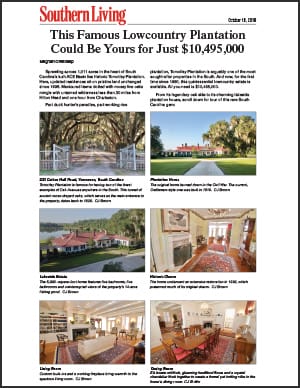 Edmund Bellinger died in 1706 and his grandson Edmund Bellinger held the land until his passing in 1739. Tomotley was then left to his widow, Elizabeth. In July of 1747 the Barony was divided among 14 different grantees and heirs. Tomotley, Brewton, Castle Hill, Bindon, and others were once part of the greater Barony. Elizabeth Butler Bellinger inherited what is now Tomotley Plantation and sold it to James Deveaux. Deveaux sold Tomotley to Ralph Izard in 1756, and Izard later bequeathed the Plantation to his son Walter in 1761. The Izard’s owned the Plantation for an extended period into the 1800s. Descendent Patience Wise Blackett Izard inherited Tomotely and planted the avenue of oaks in 1820.
Edmund Bellinger died in 1706 and his grandson Edmund Bellinger held the land until his passing in 1739. Tomotley was then left to his widow, Elizabeth. In July of 1747 the Barony was divided among 14 different grantees and heirs. Tomotley, Brewton, Castle Hill, Bindon, and others were once part of the greater Barony. Elizabeth Butler Bellinger inherited what is now Tomotley Plantation and sold it to James Deveaux. Deveaux sold Tomotley to Ralph Izard in 1756, and Izard later bequeathed the Plantation to his son Walter in 1761. The Izard’s owned the Plantation for an extended period into the 1800s. Descendent Patience Wise Blackett Izard inherited Tomotely and planted the avenue of oaks in 1820.
In 1864 James Baggett bought the Plantation for $75,000 from the Izard family under much contention. The original Plantation home was burned by Sherman’s troops in 1865. There is a manager’s house, hunting lodge, barns and stables that survived the Civil War and still stand today. Tomotley would change hands several times post Civil War.
Tomotley and many other Plantations in the region were purchased by wealthy Northern businessmen after the Civil War as waterfowl and upland hunting retreats. In 1910, Tomotley was sold to the McCurdy’s of New York City. Robert H. McCurdy was a member of the Okeetee club and foreign officer for New York Mutual Life Insurance. He constructed the grand Plantation house that sits here today in 1910. G.V. Hollis later owned Tomotley. He was also a member of the Okeetee Club. The current owners acquired the Plantation in 1990 from the Bostwick family, and quickly breathed life back into the property and structures, built the lake behind the Plantation house, reclaimed the impoundments, and renovated the existing Plantation home.
A Social Storm™ Property
Tomotley Plantation is considered a Social Storm™ Property, a term we trademarked to identify unique properties that investors gravitate to for safety in bad times and buy for a recreation reward in good times. What makes a Social Storm™ Property so unique?
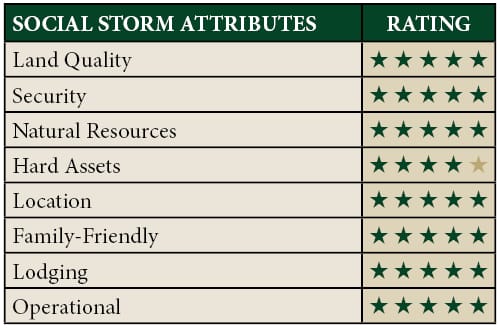
Broker’s Comments
The Kohler & Associate’s
Difference
Didn’t find what you were looking for? Or want to discuss the market with the Leader in this niche?
Contact us to discuss one of our properties, for information on properties that are not yet released to the market or to discuss the market.

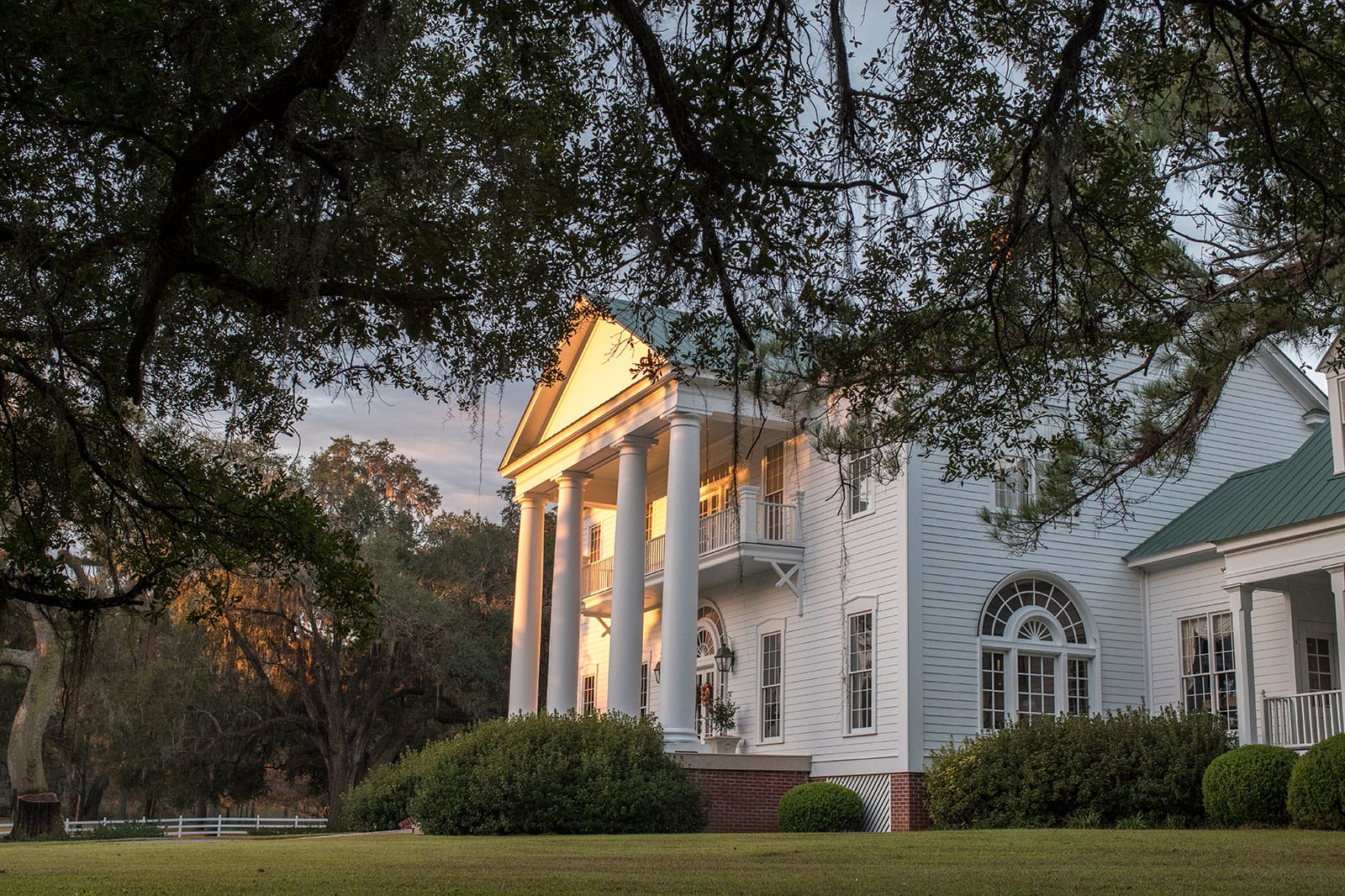


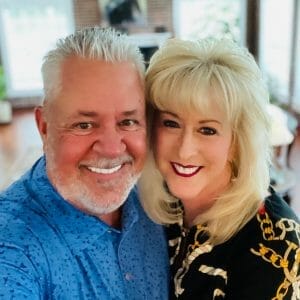 Bruce Ratliff is a retired elected official (Property Appraiser Taylor County). Bruce brings years of experience in ad valorem tax knowledge. His property tax background gives JKA Associates & clients a unique insight into the complicated tax process. Bruce held several positions in the Florida Association of Property Appraisers, including member of the Board of Directors, President, Vice-President and Secretary, and served on the Agricultural & Legislative Committees for the Association. The real estate business has been part of Bruce’s life since childhood. His mother, Shirley Ratliff owned Professional Realty of Perry, Florida and his father, Buster owned Ratliff Land Surveying which Bruce was General Manager of before his political career.
Bruce Ratliff is a retired elected official (Property Appraiser Taylor County). Bruce brings years of experience in ad valorem tax knowledge. His property tax background gives JKA Associates & clients a unique insight into the complicated tax process. Bruce held several positions in the Florida Association of Property Appraisers, including member of the Board of Directors, President, Vice-President and Secretary, and served on the Agricultural & Legislative Committees for the Association. The real estate business has been part of Bruce’s life since childhood. His mother, Shirley Ratliff owned Professional Realty of Perry, Florida and his father, Buster owned Ratliff Land Surveying which Bruce was General Manager of before his political career. From murky farm ponds to pristine glacier-cut lakes and everything in between, Knox Daniels’ expertise stems from a lifelong fascination of water and the creatures that live in and around it. He recognizes and helps clients appreciate the value water features bring to a property. “My goal is to help buyers realize and sellers maximize the value different water bodies bring to a property, not only in a recreational sense, but also for social storm reasons.” After extensively traveling the country for collegiate BASS fishing tournaments, Knox graduated and worked for the Southeast’s finest fisheries and wildlife biologist, Greg Grimes. With Grimes’ company, AES, Knox managed many of the southeast’s finest private lake estate/impoundment properties, and learned the intricacies of upscale property management. Learning from Greg and other biologists, Knox honed in on the specific conditions and habitat needed for optimal gamefish growth in private lakes. He has also worked as a property manager on several thousand acres and for a commercial developer, facilitating the dirt work and builds of several apartment complexes, but his true passion has always been in the outdoors. “I’ve always had an insatiable fascination with ponds/lakes and am grateful to be able to help to place clients on the properties of their dreams and make their personal fisheries/wildlife goals reality with JKA.” – Knox Daniels
From murky farm ponds to pristine glacier-cut lakes and everything in between, Knox Daniels’ expertise stems from a lifelong fascination of water and the creatures that live in and around it. He recognizes and helps clients appreciate the value water features bring to a property. “My goal is to help buyers realize and sellers maximize the value different water bodies bring to a property, not only in a recreational sense, but also for social storm reasons.” After extensively traveling the country for collegiate BASS fishing tournaments, Knox graduated and worked for the Southeast’s finest fisheries and wildlife biologist, Greg Grimes. With Grimes’ company, AES, Knox managed many of the southeast’s finest private lake estate/impoundment properties, and learned the intricacies of upscale property management. Learning from Greg and other biologists, Knox honed in on the specific conditions and habitat needed for optimal gamefish growth in private lakes. He has also worked as a property manager on several thousand acres and for a commercial developer, facilitating the dirt work and builds of several apartment complexes, but his true passion has always been in the outdoors. “I’ve always had an insatiable fascination with ponds/lakes and am grateful to be able to help to place clients on the properties of their dreams and make their personal fisheries/wildlife goals reality with JKA.” – Knox Daniels As a landowner of his own family farm, Lick Skillet, along with family land that has been passed down and enjoyed together at Keaton Beach for 40 years, Jon knows what it means to be a steward of the last best places. As a third-generation land broker with more than 30 years of experience in advising landowners in this niche, Jon is known for his innate ability to harvest a land’s unique intrinsic value. Touting several notable sales under his belt, Jon personally closed Rock Creek/Molpus – 124,000 acres of premium timberland at $142,000,000 – which was known as the largest timberland land sale in the Southeast for eight years running. He is a co-founding member of LandLeader and achieved the real estate industry’s highest honor, “2022 National Broker of the Year – Recreational Land Sales,” by the Realtors® Land Institute.
As a landowner of his own family farm, Lick Skillet, along with family land that has been passed down and enjoyed together at Keaton Beach for 40 years, Jon knows what it means to be a steward of the last best places. As a third-generation land broker with more than 30 years of experience in advising landowners in this niche, Jon is known for his innate ability to harvest a land’s unique intrinsic value. Touting several notable sales under his belt, Jon personally closed Rock Creek/Molpus – 124,000 acres of premium timberland at $142,000,000 – which was known as the largest timberland land sale in the Southeast for eight years running. He is a co-founding member of LandLeader and achieved the real estate industry’s highest honor, “2022 National Broker of the Year – Recreational Land Sales,” by the Realtors® Land Institute.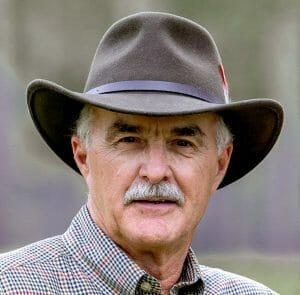 Prior to joining Jon Kohler & Associates, Walter Hatchett served for 30 years as a land manager to several of the south’s most esteemed properties, including Rock Creek. As a former property manager himself, and a consistently ranked “Top Sales Producer” nationwide and achieved “APEX Top 20 Land Broker” multiple times, Walter has a keen eye for the best in habitat management.
Prior to joining Jon Kohler & Associates, Walter Hatchett served for 30 years as a land manager to several of the south’s most esteemed properties, including Rock Creek. As a former property manager himself, and a consistently ranked “Top Sales Producer” nationwide and achieved “APEX Top 20 Land Broker” multiple times, Walter has a keen eye for the best in habitat management. With Madison County roots, Lori grew up on her family farm at Pettis Springs along the historic Aucilla River. A love of the land was instilled in Lori very early on by her father who was a local farmer. Lori understands the importance of good land stewardship and has witnessed first-hand how her own father, a former 2-term member of the Florida House of Representatives whose district encompassed many rural counties of the Red Hills Plantation Region, with a little bit of sweat equity, so lovingly worked their own family land. These are core values she carries with her today, and nothing gives her more personal satisfaction than to represent some of the south’s best land stewards.
With Madison County roots, Lori grew up on her family farm at Pettis Springs along the historic Aucilla River. A love of the land was instilled in Lori very early on by her father who was a local farmer. Lori understands the importance of good land stewardship and has witnessed first-hand how her own father, a former 2-term member of the Florida House of Representatives whose district encompassed many rural counties of the Red Hills Plantation Region, with a little bit of sweat equity, so lovingly worked their own family land. These are core values she carries with her today, and nothing gives her more personal satisfaction than to represent some of the south’s best land stewards. Hailing from a long line of outdoorsmen, Tim learned a great deal from his father and grandfather. He saw first-hand what it means to be a good land steward. He believes land is so much more than a place to hunt, fish, and grow timber or crops. “It’s an identity, a resting place, a safe haven and a way of life, said Tim.” Tim’s family ties to Alabama run deep. During his grandfather’s first term, Governor James was responsible for signing into law Alabama’s first state duck stamp which helped to ensure funding for the procurement, development, and preservation of wetlands for migratory waterfowl habitat. He also established Alabama’s lifetime hunting license, so it is no surprise that Tim is an avid outdoorsman with a keen eye as to how best to improve habitat for the greater good of its wildlife.
Hailing from a long line of outdoorsmen, Tim learned a great deal from his father and grandfather. He saw first-hand what it means to be a good land steward. He believes land is so much more than a place to hunt, fish, and grow timber or crops. “It’s an identity, a resting place, a safe haven and a way of life, said Tim.” Tim’s family ties to Alabama run deep. During his grandfather’s first term, Governor James was responsible for signing into law Alabama’s first state duck stamp which helped to ensure funding for the procurement, development, and preservation of wetlands for migratory waterfowl habitat. He also established Alabama’s lifetime hunting license, so it is no surprise that Tim is an avid outdoorsman with a keen eye as to how best to improve habitat for the greater good of its wildlife.
 Jason has been assisting landowners for the last 28 years in Georgia and South Carolina obtain achievements the owners did not realize were possible. His degree in Biology from Georgia Southern stemmed from the desire to know how things in nature work. His plantation roots began at just 16 years old outside of Albany, GA and the last 20 years were spent in the Lowcountry of South Carolina. His entire career has been spent developing a global approach to plantation management. That plan included sales. Sales is in Jason’s blood- his mom had a 45-year career as a real estate broker. After college, he chose to pursue his passion of making properties great. In 2011, Jason sold his first plantation. Since then, he has assisted buyers and sellers with over $20 million in sales while most of that time working as a full-time General Manager of a large Lowcountry plantation. Today, he is committed to using his unique skill set and experience to guide landowners through the many challenges of plantation ownership.
Jason has been assisting landowners for the last 28 years in Georgia and South Carolina obtain achievements the owners did not realize were possible. His degree in Biology from Georgia Southern stemmed from the desire to know how things in nature work. His plantation roots began at just 16 years old outside of Albany, GA and the last 20 years were spent in the Lowcountry of South Carolina. His entire career has been spent developing a global approach to plantation management. That plan included sales. Sales is in Jason’s blood- his mom had a 45-year career as a real estate broker. After college, he chose to pursue his passion of making properties great. In 2011, Jason sold his first plantation. Since then, he has assisted buyers and sellers with over $20 million in sales while most of that time working as a full-time General Manager of a large Lowcountry plantation. Today, he is committed to using his unique skill set and experience to guide landowners through the many challenges of plantation ownership.